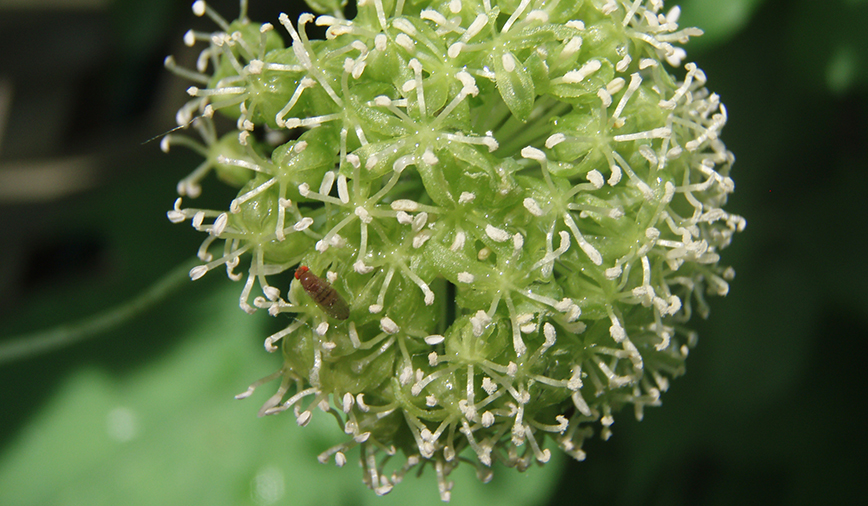Sometimes nature’s elements can be obvious, like when a skunk squirts and blankets an entire neighborhood with rich aroma. Or when a bur oak acorn leaves its mother tree and knocks you on the head.
But other times nature is much more subtle. A gentle breeze. The sun’s warm rays. A snake’s shed skin draped around some decorative limestone. (Okay, maybe that last one’s not so subtle, especially if you don’t care for scaly things. But I had to mention it since I almost overlooked one the other day.)
Right now, our native plant communities are rich in subtleties. (No snake skins though; at least none that we’ve seen.) The eye-popping pinks and purples of spring have faded, replaced with the quiet yellows and muted greens of early summer. And a great place to drink in this quiet beauty is within the friendly confines of the Native Plant Demonstration Garden behind the Pottawatomie Community Center in St. Charles.
Thursday, I was lucky enough to take a walk through the garden with Joan Kramer, our native plant pro. Joan knows the garden like a shepherdess knows her flock, and points out plants as if she were introducing you to old friends.
The first stop on our Thursday visit was to see Smilax lasioneura, or common carrion flower. With yellow-green blooms just a shade lighter than its leaves, this twining beauty can be easy to overlook. But spend a minute studying the greenish orbs—they look like pompoms bouncing in the breeze—and you’ll never pass them by again.
Carrion flower gets its name from its blossoms’ unique bouquet. Slightly acidic in nature, it reminds me more of sour yeast than carrion and proves appealing to pollinators like flies and beetles, in addition to certain bee species. To really get a good whiff, you need to bury your nose among the tiny yellow-green petals; bring a hankie, too, as you’ll likely end up with even tinier yellow-green pollen grains on your nose.
(Hint: If you find the smell of the garden’s carrion flower objectionable, reach overhead and tug down a conveniently located basswood branch. This tree is in bloom now, too, and the delicate, sweet scent of its many-petaled flowers will quickly replace any carrion particles lingering in your nostrils.)
Just a few feet from the carrion flower is grouping of plants most people would mistake for grasses with really strange growths on the ends of the blades. But a little further examination shows you’ve met up with a character from a completely different family of plants—the Cyperaceae, or sedges.
Different from grasses, which have round stems, sedge stems are triangular in shape. Bend down and grasp the stem, then roll it between your thumb and forefinger and you’ll feel three distinct edges.
Like carrion flower, the beauty of our sedges lies not in colors but in shapes. One worth noting now is the common bur sedge, Carex grayi. Waving in the breeze, the seed head on the bur sedge looks like a little bitty mace—not the spray kind, but the kind whipped around by medieval knights.
Continuing along the path toward the river, you’ll encounter many other sedges, as well as grasses and rushes. Though they may look similar at first glance, take the time to look closely and appreciate their subtle variations in shape and form. If you want (and gosh I hope you do), recite this poem to help you remember the differences between them:
Sedges have edges
Rushes are round
Grass stems are hollow
What have you found?
Should you find you still have questions, look around for Joan or her assistant Jeanette Joy. They’ll be glad to show you around the quiet, early summer garden and find the answers you need.
Better yet, mark your calendars for July 22nd from 10 to 11 am. That’s when we’ll be hosting In the Garden with Joan, an informal walk and talk featuring not just plant identification tips, but also folklore, natural history and practical advice for going, and growing, native. More information can be found by clicking the Leisure Link tab on our park district web site, www.stcparks.org.
Hope to see you there!
Pam Otto is the manager of nature programs and interpretive services for the St. Charles Park District. She can be reached at potto@stcparks.org or 630-513-4346.

